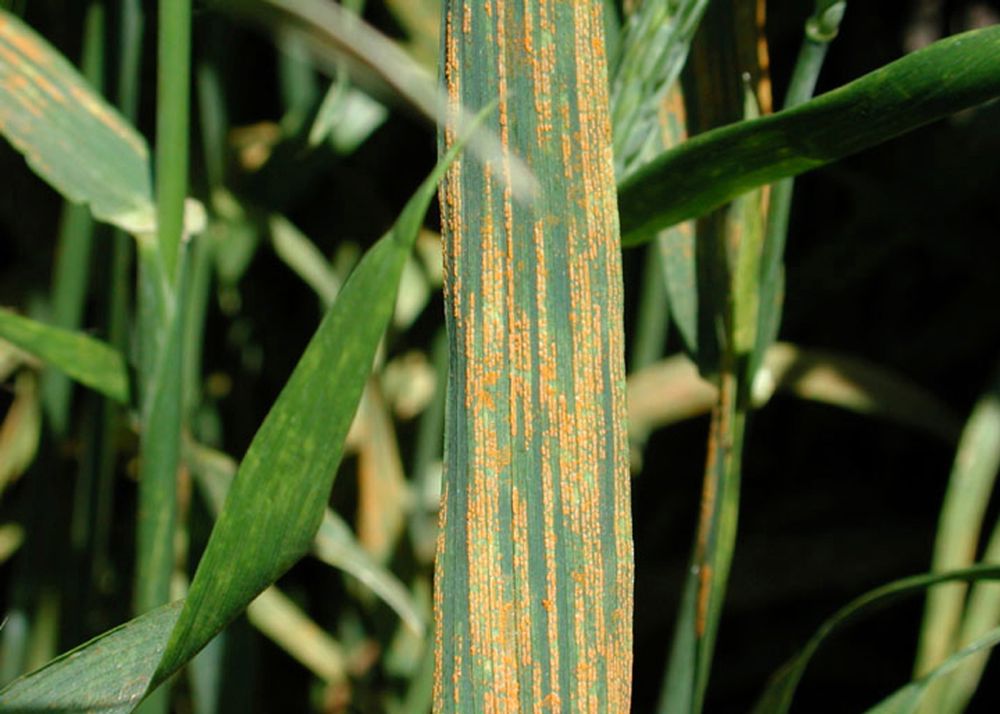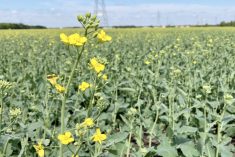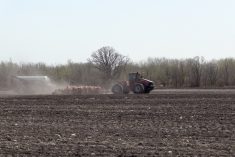Normally, stripe rust in winter wheat isn’t a huge problem for growers in Eastern Canada, and particularly in Ontario — at least, not at this stage of the growing season — but the 2016 growing season isn’t shaping up to be “normal” either.
For now, the immediate challenge before growers is to get out and scout their wheat fields. According to Dale Cowan, senior agronomist with Agris Co-operative, the worst-hit region for stripe rust at week’s end is west of Thamesville in Chatham-Kent, south of Highway 401 and down along the Lake Erie shoreline into Essex County.
Read Also

Dryness poised to threaten Saskatchewan crops
Crops in Saskatchewan are developing in opposite directions, the province’s latest crop report said. Growing conditions in the province vary, with some areas receiving enough rain while other locations are experiencing crop stress due to hot, dry conditions.
This is the region, Cowan said, where the rust spores were first blown in and deposited, and where the disease is most advanced.
But there have been additional sightings farther north, even into Grey and Bruce counties. And no matter where it’s found, growers need to act quickly to avoid significant losses in yield.
“It’s at the point where you want to keep the flag leaf clean because it produces 70 per cent of the yield, and it’s sporulating very quickly and moving very fast,” said Cowan.
“The next stage we’d consider a fungicide would be T3 (head stage), so what we’re advising is that you have to keep the flag leaf clean with a T2 (flag leaf) fungicide.”
The problem began farther south in the U.S. — and Cowan noted it was already 400 miles further north into Kentucky than it normally should have been.
Even for a grower with crops three days away from a head spray (at T3, growth stages 59 to 65), the disease is advancing so quickly that waiting those three days to save money could cost him or her 50 per cent of a field.
In the past three days, Twitter has seen a variety of photos depicting the extent of the spread of the disease. One individual photographed his lower legs and boot tops covered in yellow-orange spores, just from walking through a field. Another shows the soil between rows with the same yellow-orange colouration.
“Once the flag leaf is gone, you’re going to take a 50 to 60 per cent yield hit,” said Cowan. “If you don’t spray the flag leaf now and you’re going to wait for T3, there’ll be nothing worth protecting even three or four days from now. If you’re a week away from heading, you have to make two passes through the field or you just won’t have anything worth spraying at T3.”
The fungicides a grower would use for T1 (tiller) or T2 (flag leaf) cannot be used if the awns are showing or the heads emerging, Cowan warned. Those particular fungicides carry a strobilurin, which will increase levels of deoxynivalenol (DON) — and the risk of DON infection is extremely high, as well.
“We have this situation where we have rust, where we can lose half our yield, or DON, which will make the crop unsalable,” Cowan said, adding that neither is a great option.
“Those are your two choices, so you can’t just sit there and ignore this crop because you won’t have a wheat crop if you’re badly infected. And the first step is you have to get out and scout your fields!”
— Ralph Pearce is a field editor for Country Guide at St. Marys, Ont. Follow him at @arpee_ag on Twitter.





















